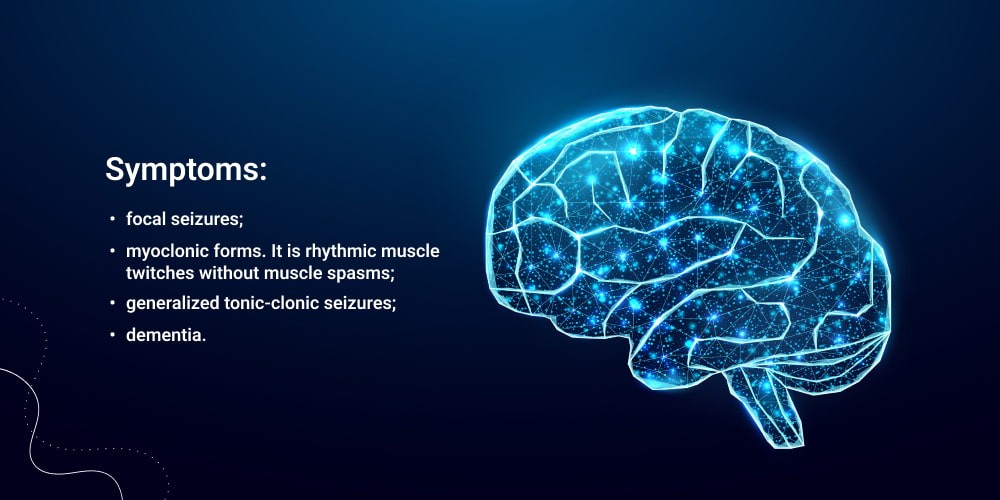Nursing Paper Example on Alpers Disease: Understanding a Rare Neurological Disorder
Nursing Paper Example on Alpers Disease: Understanding a Rare Neurological Disorder
Alpers Disease, also recognized as Alpers-Huttenlocher syndrome, is an uncommon neurological disorder that profoundly impacts infants and young children, often presenting within the initial years of life. This condition, characterized by a trio of symptoms encompassing seizures, liver dysfunction, and progressive neurological degeneration, was first delineated by Bernard Jacob Alpers in 1931. Despite its rarity, Alpers Disease poses significant challenges to affected individuals and their families due to its severe and debilitating nature. Understanding the underlying causes, clinical manifestations, and management strategies for Alpers Disease is crucial for healthcare professionals and caregivers alike. In this paper, we will delve into the causes, signs and symptoms, etiology, pathophysiology, DMS-5 diagnosis criteria, treatment regimens and patient education, and conclude by highlighting the importance of comprehensive care for individuals grappling with this challenging condition. (Nursing Paper Example on Alpers Disease: Understanding a Rare Neurological Disorder)

Causes
The exact cause of Alpers Disease remains enigmatic, yet it is predominantly attributed to genetic mutations affecting mitochondrial DNA (mtDNA). Mitochondria, revered as the powerhouse of the cell, play a pivotal role in energy production. The mutations implicated in Alpers Disease primarily target genes responsible for mitochondrial function, particularly those crucial for DNA replication and maintenance within mitochondria.
These genetic mutations engender mitochondrial dysfunction, thereby impeding energy metabolism, particularly in tissues with elevated energy requisites like the brain and liver. Consequently, affected individuals endure a cascade of physiological disturbances, culminating in the characteristic triad of symptoms associated with Alpers Disease.
Mitochondrial DNA mutations are typically inherited in an autosomal recessive pattern, signifying that both parents must carry a mutated gene for their offspring to manifest the disease. Occasionally, Alpers Disease can also result from spontaneous mutations occurring in the mtDNA during embryonic development.
It is essential to recognize that while genetic mutations serve as the primary precipitant for Alpers Disease, environmental factors, and additional genetic modifiers may influence the severity and clinical presentation of the disorder. Furthermore, the variable penetrance and expressivity of mitochondrial DNA mutations contribute to the heterogeneous nature of Alpers Disease, wherein affected individuals may exhibit a spectrum of symptoms ranging from mild to severe.
Given the intricate interplay between genetic predisposition and environmental factors in the pathogenesis of Alpers Disease, further research endeavors are imperative to elucidate the precise mechanisms underlying this debilitating disorder. Such insights hold the potential to inform the development of novel therapeutic interventions aimed at ameliorating the clinical course and enhancing the quality of life for individuals grappling with Alpers Disease. (Nursing Paper Example on Alpers Disease: Understanding a Rare Neurological Disorder)
Signs and Symptoms
Alpers Disease presents a constellation of symptoms that progressively worsen over time, severely impairing affected individuals’ quality of life. The clinical manifestations of this disorder are diverse, encompassing neurological, hepatic, and systemic abnormalities.

Neurological Symptoms: Seizures represent a hallmark feature of Alpers Disease and often serve as the initial presenting symptom. These seizures typically commence in infancy or early childhood and tend to be refractory to conventional antiepileptic medications. As the disease progresses, affected individuals may experience various types of seizures, including focal, generalized, or myoclonic seizures.
Developmental Regression: Progressive developmental regression is a prominent feature of Alpers Disease, characterized by a loss of previously acquired developmental milestones. Affected individuals may exhibit a decline in motor skills, speech, and cognitive abilities, ultimately leading to profound intellectual disability.
Neurological Decline: Over time, individuals with Alpers Disease experience a relentless deterioration of neurological function, marked by a decline in motor coordination, muscle weakness, and spasticity. The progressive neurodegeneration may also manifest as movement disorders, including dystonia and ataxia.
Hepatic Dysfunction: Liver involvement is another cardinal feature of Alpers Disease, presenting as hepatomegaly, jaundice, and signs of hepatic failure. Liver dysfunction may manifest early in infancy or later in the disease course and can significantly impact overall prognosis.
Systemic Symptoms: In addition to neurological and hepatic manifestations, individuals with Alpers Disease may exhibit systemic symptoms, including failure to thrive, feeding difficulties, and metabolic disturbances.
Ophthalmological Abnormalities: Ophthalmological abnormalities, such as optic atrophy and retinitis pigmentosa, have also been reported in some individuals with Alpers Disease, further contributing to the multisystemic nature of the disorder.
The progressive nature and multisystemic involvement of Alpers Disease underscore the complex pathophysiology underlying this devastating disorder, necessitating a multidisciplinary approach to management and care. (Nursing Paper Example on Alpers Disease: Understanding a Rare Neurological Disorder)
Etiology
Pathophysiology
The pathophysiology of Alpers Disease revolves around mitochondrial dysfunction, which disrupts cellular energy metabolism and leads to widespread neuronal and hepatic damage. Mitochondria, organelles responsible for generating cellular energy in the form of adenosine triphosphate (ATP), play a central role in the pathogenesis of this disorder.
Mutations in genes encoding proteins involved in mitochondrial DNA (mtDNA) replication and maintenance, such as POLG, TWNK, and DGUOK, impair mitochondrial DNA synthesis and repair processes. Consequently, mitochondrial dysfunction ensues, characterized by reduced ATP production and increased production of reactive oxygen species (ROS).
The impaired energy metabolism resulting from mitochondrial dysfunction particularly affects tissues with high energy demands, such as the brain and liver. Neurons are highly susceptible to mitochondrial dysfunction due to their reliance on ATP for synaptic transmission and neuronal signaling. The progressive neuronal degeneration observed in Alpers Disease is attributed to energy depletion, oxidative stress, and impaired mitochondrial function, leading to neuronal cell death.
Hepatic dysfunction in Alpers Disease stems from mitochondrial impairment and the resultant disruption of liver metabolism. Mitochondria play a crucial role in hepatic energy metabolism, and their dysfunction leads to hepatocyte injury, hepatomegaly, and liver failure.
The accumulation of reactive oxygen species (ROS) resulting from mitochondrial dysfunction exacerbates cellular damage, leading to oxidative stress and further amplifying tissue injury. Additionally, impaired mitochondrial function disrupts calcium homeostasis and alters cellular signaling pathways, contributing to the pathogenesis of Alpers Disease.
Overall, the pathophysiology of Alpers Disease is characterized by mitochondrial dysfunction, energy depletion, oxidative stress, and widespread cellular damage, particularly affecting the brain and liver. Understanding these underlying pathogenic mechanisms is crucial for developing targeted therapeutic interventions aimed at ameliorating mitochondrial dysfunction and mitigating the devastating consequences of this debilitating disorder. (Nursing Paper Example on Alpers Disease: Understanding a Rare Neurological Disorder)
DMS-5 Diagnosis
Diagnosing Alpers Disease typically involves a comprehensive clinical evaluation, neuroimaging studies, and genetic testing to ascertain the presence of characteristic symptoms and identify underlying genetic mutations. The Diagnostic and Statistical Manual of Mental Disorders, Fifth Edition (DSM-5), does not delineate specific diagnostic criteria for Alpers Disease but provides guidelines for assessing the clinical presentation and determining the appropriate diagnostic approach.
The DSM-5 criteria for epilepsy, a common feature of Alpers Disease, encompass recurrent, unprovoked seizures, which align with the clinical manifestation of seizures observed in affected individuals. Additionally, developmental regression, cognitive decline, and neurological abnormalities evident in Alpers Disease may fulfill the criteria for intellectual disability or other neurodevelopmental disorders outlined in the DSM-5.
Neuroimaging studies, particularly magnetic resonance imaging (MRI), play a crucial role in the diagnostic workup of Alpers Disease. MRI findings may reveal characteristic abnormalities, including cerebral atrophy, white matter changes, and signal abnormalities in the basal ganglia, which are consistent with the neurodegenerative nature of the disorder.
Genetic testing is paramount for confirming the diagnosis of Alpers Disease, as it enables the identification of mutations in genes associated with mitochondrial dysfunction, such as POLG, TWNK, and DGUOK. Targeted sequencing or whole-exome sequencing techniques are utilized to detect pathogenic variants in these genes, providing definitive confirmation of the diagnosis.
The diagnostic evaluation of Alpers Disease necessitates a multidisciplinary approach involving neurologists, geneticists, and other healthcare professionals. By integrating clinical assessment, neuroimaging studies, and genetic testing, healthcare providers can establish an accurate diagnosis and initiate appropriate management strategies tailored to the individual needs of patients with Alpers Disease. (Nursing Paper Example on Alpers Disease: Understanding a Rare Neurological Disorder)
Treatment Regimens and Patient Education
As of now, there is no cure for Alpers Disease, and treatment primarily focuses on managing symptoms and providing supportive care to improve the quality of life for affected individuals. Given the complex nature of this disorder, treatment regimens typically entail a multidisciplinary approach involving neurologists, hepatologists, geneticists, and other healthcare professionals.
Symptom Management: Antiepileptic drugs (AEDs) are commonly prescribed to manage seizures in individuals with Alpers Disease. However, seizures associated with this disorder are often refractory to conventional AEDs, necessitating a tailored approach to medication management. Adjunctive therapies, such as ketogenic diet therapy or other dietary interventions, may be considered in some cases to help control seizures.
Supportive Care: Supportive care plays a pivotal role in managing the diverse array of symptoms associated with Alpers Disease. Physical and occupational therapies are integral components of supportive care, aiming to optimize motor function, enhance mobility, and improve the overall quality of life for affected individuals. Speech therapy may also be beneficial in addressing communication difficulties and speech impairments.
Nutritional Support: Given the hepatic involvement observed in Alpers Disease, ensuring adequate nutritional support is essential to support overall health and well-being. Nutritional interventions may include specialized formulas, dietary modifications, or gastrostomy tube placement to facilitate adequate nutrient intake, particularly in individuals with feeding difficulties or failure to thrive.
Liver Transplantation: In cases of severe liver dysfunction or liver failure secondary to Alpers Disease, liver transplantation may be considered as a therapeutic option. Liver transplantation can provide a life-saving intervention by replacing the diseased liver with a healthy donor organ, thereby improving the overall prognosis and quality of life for affected individuals.
Patient Education: Patient education is integral to the management of Alpers Disease, as it empowers patients and their families to understand the nature of the disorder and actively participate in treatment decisions. Educating patients and caregivers about the signs and symptoms of Alpers Disease, available treatment options, and strategies for symptom management can help alleviate anxiety and improve coping mechanisms.
Additionally, providing information about available support services, such as patient advocacy groups and community resources, can facilitate access to additional support and assistance for affected individuals and their families. By fostering open communication and providing comprehensive education, healthcare providers can empower patients and caregivers to navigate the challenges associated with Alpers Disease effectively.
While there is currently no cure for Alpers Disease, a multidisciplinary approach to treatment focusing on symptom management, supportive care, and patient education can significantly improve the quality of life for affected individuals and their families. By addressing the diverse array of symptoms and providing comprehensive support, healthcare providers can optimize outcomes and enhance the overall well-being of individuals grappling with this rare and debilitating disorder. (Nursing Paper Example on Alpers Disease: Understanding a Rare Neurological Disorder)
Conclusion
Alpers Disease presents a significant challenge due to its rare occurrence and severe clinical manifestations affecting infants and young children. Through an exploration of its causes, signs and symptoms, etiology, pathophysiology, DSM-5 diagnosis, treatment regimens, and patient education, we have gained a deeper understanding of this debilitating disorder. While the exact cause remains elusive, genetic mutations disrupting mitochondrial function play a central role in its pathogenesis. Symptom management, supportive care, and patient education are paramount in addressing the diverse array of symptoms and optimizing outcomes for affected individuals and their families. Despite the absence of a cure, a multidisciplinary approach to treatment, including antiepileptic drugs, supportive therapies, and nutritional support, can significantly enhance the quality of life for those grappling with Alpers Disease. By fostering open communication and providing comprehensive education, healthcare providers can empower patients and caregivers to navigate the challenges associated with this rare and devastating disorder effectively. (Nursing Paper Example on Alpers Disease: Understanding a Rare Neurological Disorder)
References
https://www.ncbi.nlm.nih.gov/books/NBK540966/


